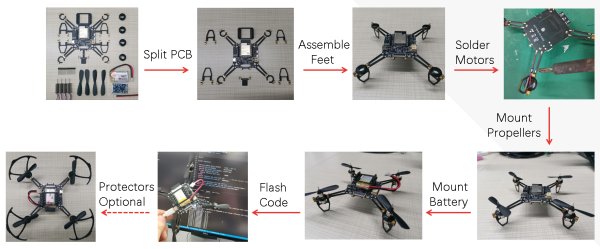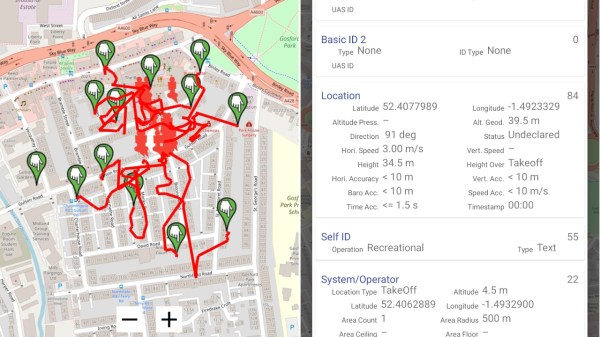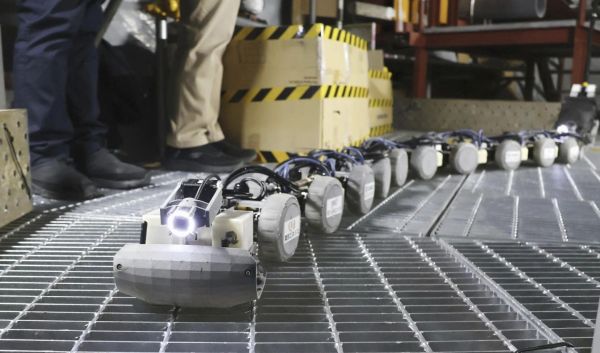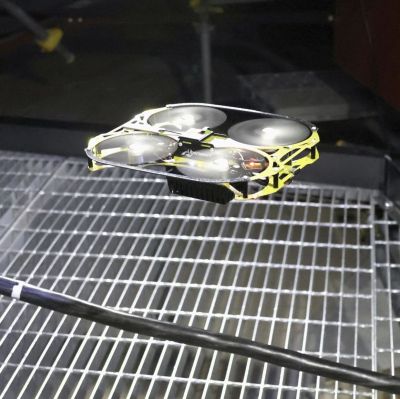Vehicles that change their shape and form to adapt to their operating environment have long captured the imagination of tech enthusiasts, and building one remains a perennial project dream for many makers. Now, [Michael Rechtin] has made the dream a bit more accessible with a 3D printed quadcopter that seamlessly transforms into a tracked ground vehicle.
The design tackles a critical engineering challenge: most multi-mode vehicles struggle with the vastly different rotational speeds required for flying and driving. [Michael]’s solution involves using printed prop guards as wheels, paired with lightweight tracks. An extra pair of low-speed brushless motors are mounted between each wheel pair, driving the system via sprockets that engage directly with the same teeth that drive the tracks.
The transition magic happens through a four-bar linkage mounted in a parallelogram configuration, with a linear actuator serving as the bottom bar. To change from flying to driving configuration the linear actuator retracts, rotating the wheels/prop guards to a vertical position. A servo then rotates the top bar, lifting the body off the ground. While this approach adds some weight — an inevitable compromise in multi-purpose machines — it makes for a practical solution.
Powering this transformer is a Teensy 4.0 flight controller running dRehmFlight, a hackable flight stabilization package we’ve seen successfully adapted for everything from VTOLs to actively stabilized hydrofoils. Continue reading “Transforming Drone Drives And Flies”



















